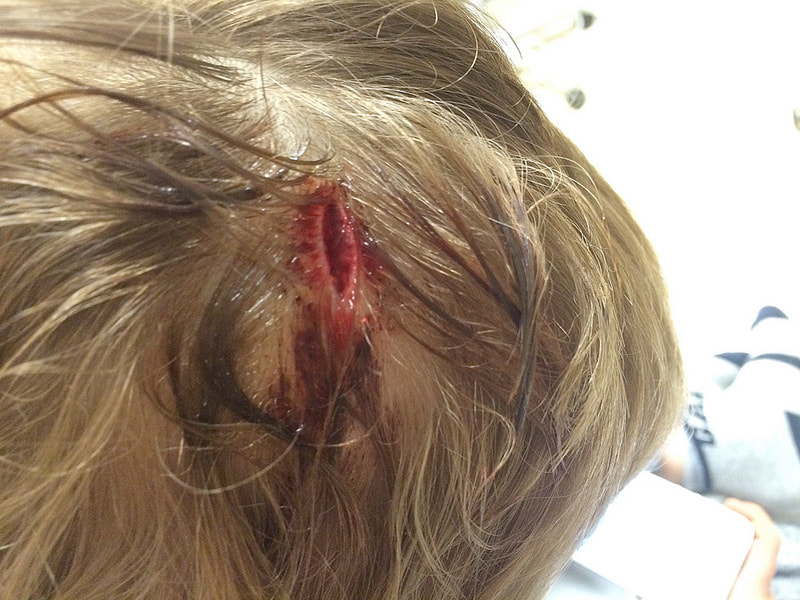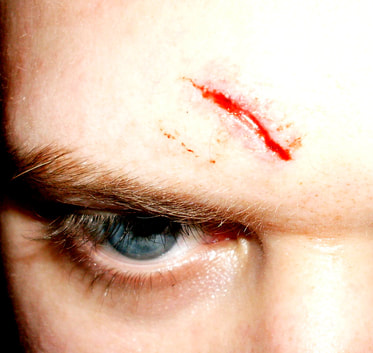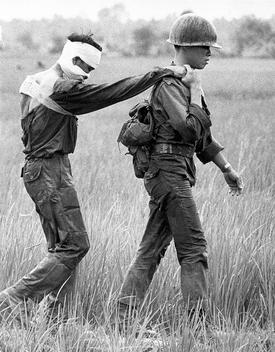Lacerations are cuts to the skin, usually caused by a sharp object.
Evaluation:
Evaluation:
- Is the wound actively bleeding?
- How deep is the laceration?
- Is there any sign of a wound infection (pus or swelling and redness of the wound)?
- Is there any other injury like a broken bone ?
Treatment:
- Stop the bleeding
- Stop the bleeding
- Apply direct pressure until bleeding stops. This may take >5 minutes.
- If wound is very deep then direct pressure may not work
- If bleeding continues to be severe, apply a pressure dressing (see below), and if still severe, apply a tourniquet.
- Wash thoroughly with tap water (if available). Rinse for 2-3 minutes if possible.
- If no running water, rinse with as much clean water as available (preferably at least a gallon)
- Use a butterfly bandage
- Apply tissue adhesive or super glue (new tube/never opened)
- Use skin stapler (if available)
- Use strips of tape (tear duct tape into smaller pieces)
- Stitches (if wound is gaping or large) - can use needle and thread
- Apply antibiotic ointment or Vaseline to wound or to bandage
- Cover wound completely with clean bandage(s)
- Tape bandage into place or wrap with elastic/ACE wrap
- If bleeding heavy/won't stop, apply a pressure dressing (see below)
|
Pressure Dressings:
If bleeding continues after pressure applied to wound manually, then a pressure dressing may be needed.
|


